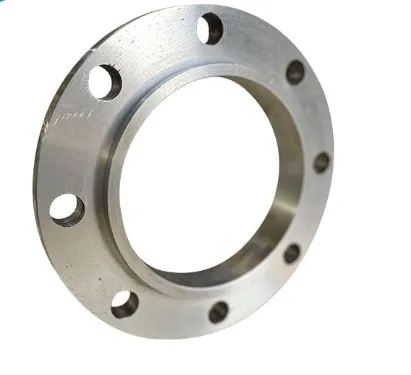-
Cangzhou Yulong Steel Co., Ltd.
-
Phone:
+86 13303177267 -
Email:
admin@ylsteelfittings.com
- English
- Arabic
- Italian
- Spanish
- Portuguese
- German
- kazakh
- Persian
- Greek
- French
- Russian
- Polish
- Thai
- Indonesian
- Vietnamese
- Zulu
- Korean
- Uzbek
- Hindi
- Serbian
- Malay
- Ukrainian
- Gujarati
- Haitian Creole
- hausa
- hawaiian
- Hebrew
- Miao
- Hungarian
- Icelandic
- igbo
- irish
- Japanese
- Javanese
- Kannada
- Khmer
- Rwandese
- Afrikaans
- Albanian
- Amharic
- Armenian
- Azerbaijani
- Basque
- Belarusian
- Bengali
- Bosnian
- Bulgarian
- Catalan
- Cebuano
- China
- China (Taiwan)
- Corsican
- Croatian
- Czech
- Danish
- Esperanto
- Estonian
- Finnish
- Frisian
- Galician
- Georgian
- Kurdish
- Kyrgyz
- Lao
- Latin
- Latvian
- Lithuanian
- Luxembourgish
- Macedonian
- Malgashi
- Malayalam
- Maltese
- Maori
- Marathi
- Mongolian
- Myanmar
- Nepali
- Norwegian
- Norwegian
- Occitan
- Pashto
- Dutch
- Punjabi
- Romanian
- Samoan
- Scottish Gaelic
- Sesotho
- Shona
- Sindhi
- Sinhala
- Slovak
- Slovenian
- Somali
- Sundanese
- Swahili
- Swedish
- Tagalog
- Tajik
- Tamil
- Tatar
- Telugu
- Turkish
- Turkmen
- Urdu
- Uighur
- Welsh
- Bantu
- Yiddish
- Yoruba

Dec . 01, 2024 02:41 Back to list
metal curved pipe
The Versatility and Advantages of Metal Curved Pipes
Metal curved pipes have become an essential component in various industries due to their versatility, durability, and aesthetic appeal. These pipes, characterized by their ability to bend and shape into different curvatures, are used in applications ranging from construction and mechanical engineering to automotive and aerospace industries.
One of the primary benefits of metal curved pipes is their strength. Metals such as steel and aluminum provide exceptional tensile strength and resistance to environmental factors such as corrosion and temperature fluctuations. This makes them ideal for use in demanding conditions, such as in manufacturing facilities or outdoor installations. For instance, stainless steel curved pipes are commonly used in plumbing and piping systems because of their resistance to rust and chemical damage.
In addition to strength, the design flexibility of metal curved pipes adds to their appeal. Most manufacturing processes allow for precise bending, enabling engineers to create designs tailored to specific requirements. This adaptability is vital in industries where space constraints dictate the arrangement of components. Curved pipes can navigate tight spaces and connect different systems without the need for additional joints, which can compromise structural integrity.
Moreover, metal curved pipes are highly efficient in fluid transport. Their smooth internal surfaces reduce friction, allowing for better flow rates in plumbing and HVAC systems. When compared to traditional straight pipes, curved pipes can minimize pressure drops and energy losses, leading to more efficient operation. This characteristic is particularly beneficial in industrial applications where the transport of liquids and gases is critical.
metal curved pipe

From an aesthetic standpoint, metal curved pipes can be visually appealing. They can enhance the architectural design of buildings, adding a modern touch to both interior and exterior spaces. Architects and designers often incorporate curved metal features into their projects to create dynamic and attractive structures. For instance, in contemporary architecture, you can see metal curvature used in facades and railings, providing both decorative and functional elements.
Another noteworthy aspect is the ease of installation. Curved pipes often require fewer fittings than straight pipes when connecting sections. This not only reduces the complexity of assembly but also minimizes the potential for leaks. As such, industries benefit from lower maintenance costs and reduced labor during installation.
The sustainability aspect of metal curved pipes cannot be overlooked. Metals are recyclable, making them an environmentally friendly choice for construction and manufacturing. With growing concerns over ecological impact, using recyclable materials is a compelling reason for industries to opt for metal products.
In conclusion, metal curved pipes prove to be a vital asset across various sectors. Their strength, design flexibility, efficiency in fluid transport, aesthetic appeal, and sustainability make them a superior choice over traditional piping solutions. As technology advances, the manufacturing processes for these pipes are becoming even more refined, promising further innovations in their applications. Whether in industrial infrastructures or architectural designs, the future of metal curved pipes is undoubtedly bright, paving the way for more efficient and visually stunning constructions.
Latest news
-
ANSI 150P SS304 SO FLANGE
NewsFeb.14,2025
-
ASTM A333GR6 STEEL PIPE
NewsJan.20,2025
-
ANSI B16.5 WELDING NECK FLANGE
NewsJan.15,2026
-
ANSI B16.5 SLIP-ON FLANGE
NewsApr.19,2024
-
SABS 1123 FLANGE
NewsJan.15,2025
-
DIN86044 PLATE FLANGE
NewsApr.19,2024
-
DIN2527 BLIND FLANGE
NewsApr.12,2024
-
JIS B2311 Butt-Welding Fittings LR/SR 45°/90° /180°Seamless/Weld
NewsApr.23,2024











